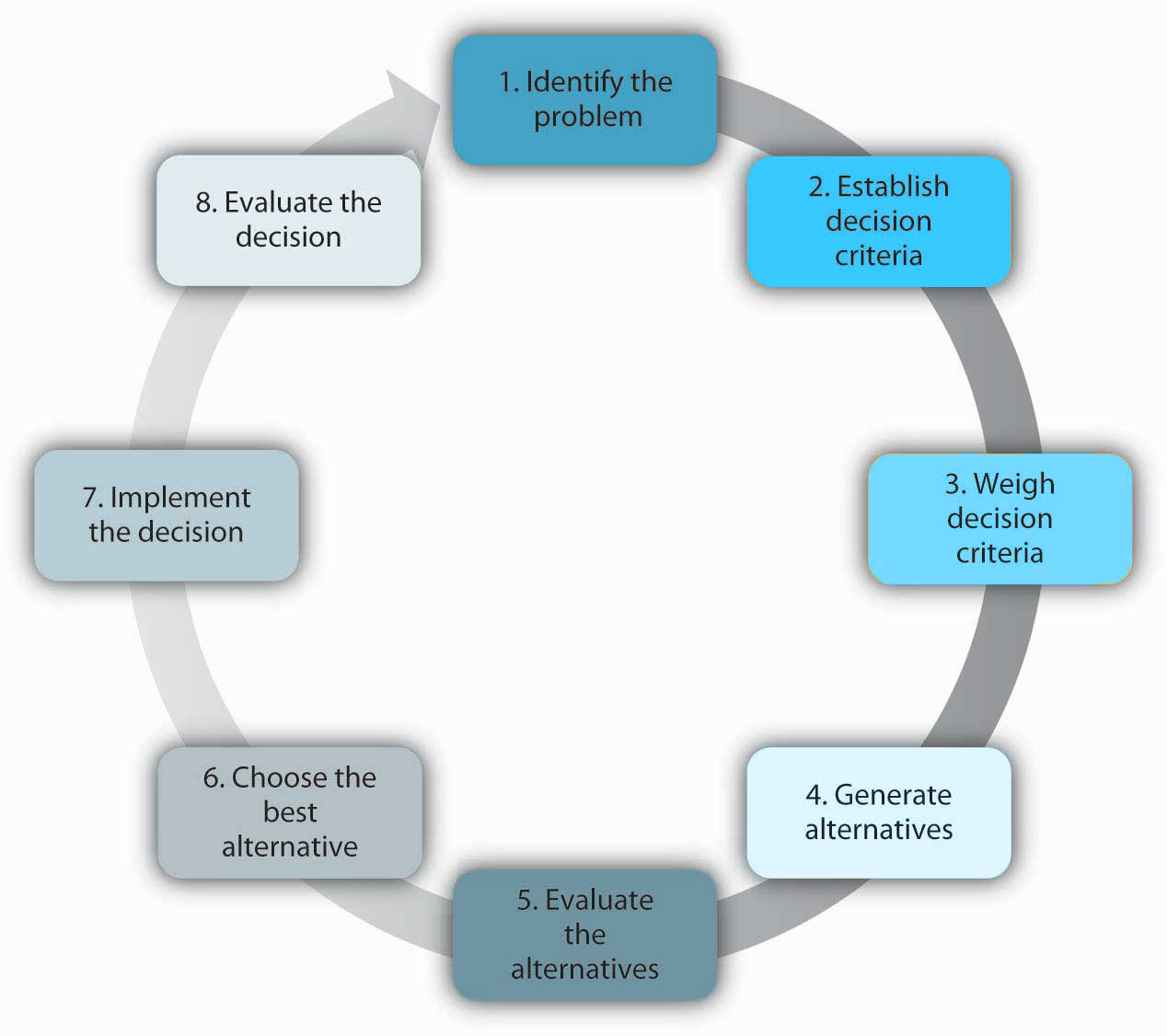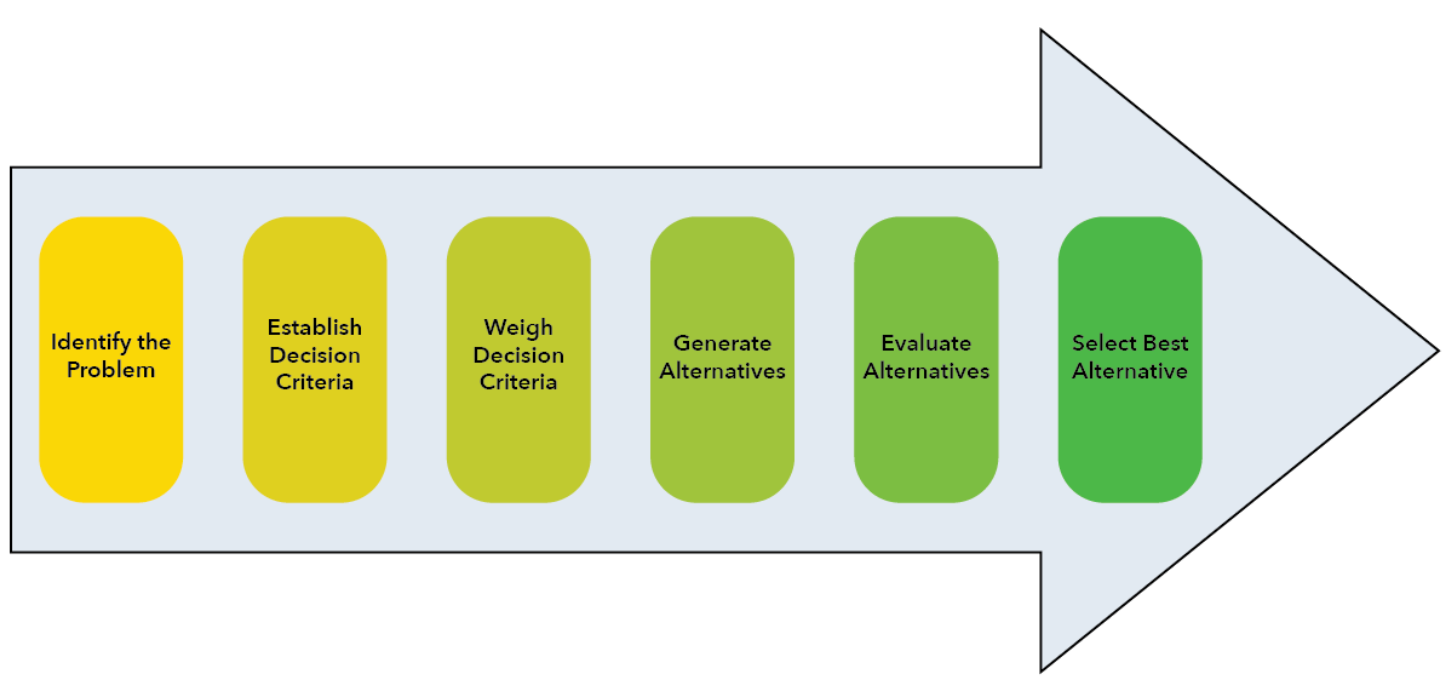
Decision-making models
Decision-making is a fundamental human activity. We face countless decisions every day, from small choices like what to eat for breakfast to major life decisions like choosing a career path. While some decisions are simple and intuitive, others require careful consideration and a structured approach. This is where decision-making models come in.
Decision-making models are frameworks or tools that provide a systematic way to evaluate options, assess risks, and make informed choices. They can help individuals and organizations make better decisions by reducing bias, increasing objectivity, and improving the overall decision-making process.
1. The Rational Model
The rational model is a classic decision-making model based on the assumption that decision-makers are logical and strive to maximize outcomes. It involves several steps:

Define the problem: Clearly identify the issue that needs to be addressed.
Strengths:
Provides a structured and systematic approach to decision-making.

Weaknesses:
Assumes that decision-makers have complete information and are perfectly rational, which is often not the case in real-world situations.
2. The Bounded Rationality Model
The bounded rationality model recognizes the limitations of human rationality and acknowledges that decision-makers often have limited information, cognitive capacity, and time. It suggests that people make decisions based on:
Satisficing: Choosing the first option that meets a minimum acceptable threshold, rather than searching for the optimal solution.
Strengths:
More realistic than the rational model in reflecting human behavior.
Weaknesses:
May lead to suboptimal decisions if the chosen option is not the best possible one.
3. The Intuitive Model
The intuitive model emphasizes the role of unconscious processes and gut feelings in decision-making. It suggests that experienced decision-makers can often make effective decisions quickly and efficiently based on their intuition and tacit knowledge.
Strengths:
Can be very fast and efficient for experienced decision-makers.
Weaknesses:
Can be prone to biases and errors, especially for inexperienced decision-makers.
4. The Creative Decision-Making Model
The creative decision-making model emphasizes the importance of creativity and innovation in the decision-making process. It involves techniques such as:
Brainstorming: Generating a large number of ideas without judgment.
Strengths:
Can lead to innovative and novel solutions.
Weaknesses:
Can be time-consuming and may not always lead to practical or feasible solutions.
5. The Group Decision-Making Model
The group decision-making model recognizes that many important decisions are made by groups, such as teams, committees, or boards of directors. It involves various techniques for group decision-making, such as:
Consensus: Reaching agreement among all members of the group.
Strengths:
Can leverage the diverse knowledge and perspectives of group members.
Weaknesses:
Can be time-consuming and complex to coordinate.
6. The Decision Tree Model
The decision tree model is a visual tool for representing and analyzing complex decisions. It involves creating a tree-like diagram with nodes representing decisions and branches representing possible outcomes.
Strengths:
Provides a clear and visual representation of the decision-making process.
Weaknesses:
Can be complex and difficult to construct for complex decisions.
7. The Cost-Benefit Analysis Model
The cost-benefit analysis model is used to evaluate the economic feasibility of a decision by comparing the costs and benefits of different options. It involves:
Identifying all costs associated with each option, including direct costs, indirect costs, and opportunity costs.
Strengths:
Provides a quantitative framework for evaluating the economic implications of decisions.
Weaknesses:
May not accurately reflect all relevant costs and benefits, especially intangible factors.
8. The SWOT Analysis Model
The SWOT analysis model is a strategic planning tool that can be used to assess the internal strengths and weaknesses of an organization, as well as the external opportunities and threats it faces. It can be used to inform decision-making by:
Identifying areas where the organization has a competitive advantage.
Strengths:
Provides a comprehensive framework for analyzing the internal and external environment.
Weaknesses:
Can be time-consuming and may require significant data collection and analysis.
9. The Force Field Analysis Model
The force field analysis model is used to identify and analyze the driving forces that support a change and the restraining forces that oppose it. It can be used to:
Plan and implement change initiatives.
Strengths:
Provides a visual and intuitive way to understand the forces that influence a particular situation.
Weaknesses:
May not provide specific guidance on which decision to make.
10. The Six Thinking Hats Model
The six thinking hats model is a creative thinking technique that encourages individuals to approach decision-making from different perspectives. It involves wearing six metaphorical “hats” that represent different modes of thinking:
White hat: Focuses on facts and information.
Strengths:
Encourages divergent thinking and exploration of different perspectives.
Weaknesses:
Can be time-consuming and may not be suitable for all types of decisions.